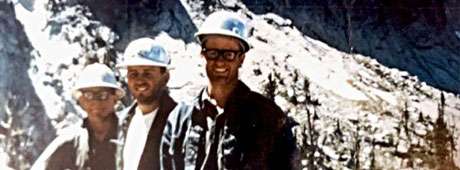No products in the cart.
Trail-Blasters

Teenagers Who Forged Our Wilderness Hikes
By Dan Eaton
Photos courtesy of Dan Eaton
When you read the logs of backcountry trips in the Big Horn Crags area of the Salmon River Mountains, they describe Beaver Slide Trail as beautiful but hazardous in non-summer months because of ice. I guess the good news is that more than a half-century after we built the trail, it’s still worthy to travel on. In the 1960s, when my brother, three cousins, and I were in high school and college-aged, our trail-building partnership had a number of challenging wilderness jobs—but Beaver Slide was a beast. The work started on top of a ridge at nine thousand feet elevation, and we had to cling to the side of a granite chute. The trail was actually a reconstruction project, because a previous trail that had linked the Beaver Slide chute with Harbor Lake had been built on the chute’s loose shale, which meant it required constant maintenance to combat the effects of winter snowfall and runoff. Our job was to cut a new trail through solid rock around the slide area.
The residential camp was on the non-working side of the ridge, which required a hike to the site each morning of four hundred feet in elevation, straight up. We used dynamite to blast the first five hundred feet of the trail out of a granite wall, which required scaling down the face with safety ropes to drill holes and place the charges. The rest of the 5,600-foot trail had to be cut out of a granite side slope ranging from ten to forty-five degrees.
Shortly after we started our assault on the first five hundred feet, we came face-to- face with three bighorn sheep licking salt from the newly dynamited rock. The rock was sheer above and below the trail, providing no clear escape route for men nor sheep. After a brief stare-down, the sheep turned and went straight up the wall, displaying amazing footwork.
This content is available for purchase. Please select from available options.
Purchase Only
Purchase Only

